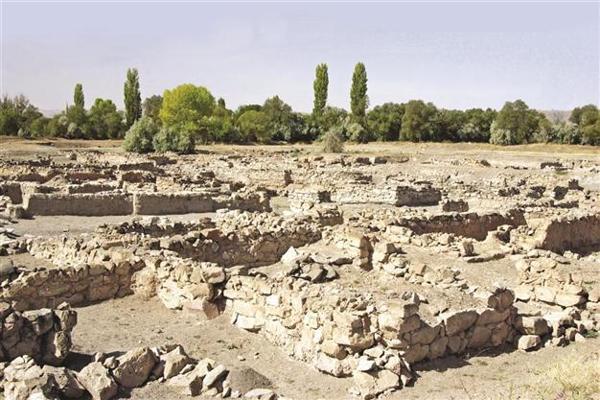Kültepe digs may reveal new written documents
KAYSERI - Anatolia News Agency


This year’s excavations in Kültepe/Kaniş will continue to find new traces from as many as 5,000 years ago. Hürriyet photo
The archaeological excavations that started in 1948 at the Karum tumulus of the Kültepe/Kaniş province of the central province of Kayseri are still ongoing around 20 kilometers from the Kayseri-Sivas highway. The head of the Kültepe excavations, Professor Fikri Kulakoğlu, told Anatolia news agency some details about the works. “We are planning to work in an area of the Bronze Age, about 5,000 years earlier than today. These studies will be held by a scientific committee consisting of 70 people,” Kulakoğlu.He said the name “Kültepe” had been known since 1871, when the cuneiform tablet, known as the “Cappadocia Tablets,” were found. The first excavation in Kültepe was then led by Ernst Chantre from 1893 to 1894. Excavations continued with H. Winckler and H. Grothe in 1906.
Kulakoğlu said the excavations would continue in Karum (Down River), aiming to find traces from as many as 5,000 years ago. “We started our excavations on June 15. Karum has an importance of being the starting point of the Anatolian history, so the excavations need to be conducted even more carefully compared to other cities. In this year, we are planning an opening in the Karum area and the traces of 5,000 years ago from the Bronze Age will be examined. These studies will continue under the control of a scientific commission of 70 people and students from different universities will also join the excavations. The project will continue for three-and-a-half months. Our biggest aim in these studies is to find traces and tablets from earlier times in the Karum area,” he added.
The local municipality supports the excavations. “[Kayseri Mayor] Mehmet Özhaseki has some cultural tours that are beneficial for the introduction of the area, as much as his contributions to the cleaning and excavation of the area. Theater performances are also included in these culture tours. I am really grateful for their efforts because they are realizing activities that are unique in Turkey.”
The importance of Kültepe
Kulakoğlu said the changes occurring in Anatolia 5,000 years ago could be observed in the other tumulus and settled areas of Turkey, while on the other hand no other area in Turkey had information even dating back to 2000 B.C. “Besides, this information is not only about Turkey, but also enlightens the dark sides of neighboring countries’ histories,” he added, without elaborating.
The cuneiform writings of Kültepe are the oldest documents found in the Turkish lands. “For this reason, Kültepe is where Anatolian history begins. There are 25,000 cuneiform writings found in Kültepe up to now. The most important of these documents is the tablet from 2000 B.C., which explains that there were local kingdoms in Anatolia at that time and the Kaniş Kingdom was the most powerful local kingdom in Anatolia. Merchants from Asur, which is 1,000 kilometers away, came to Kaniş to use the natural sources of Anatolia,” explained Kulakoğlu.
The Kaniş, Karum and Kültepe area has a 550 meter diameter and 20 meter height. The settlement in the cumulus is composed of segments from the early Bronze Age, the middle Bronze Age, the Iron Age, and Ancient Greece and Rome.
